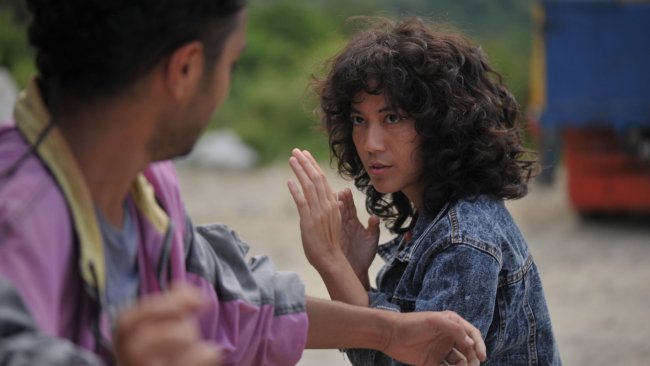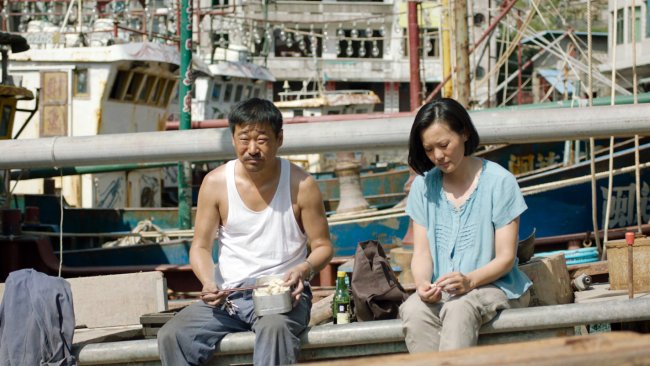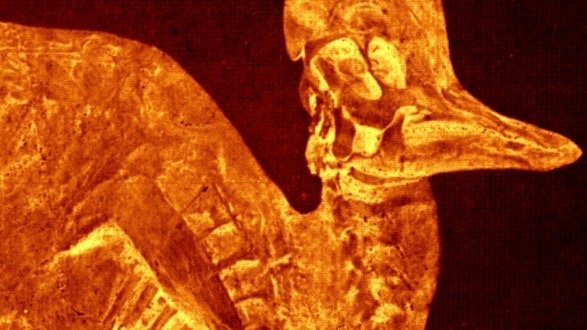The Sun, the Sun Blinded Me | Anka & Wilhelm Sasnal
[...] Not only is the stranger, Rafał Mularz, an ungraspable character working as a disrupting force for the conventions of society, but the crime itself also seems to be equally ungraspable.
[...] This last contrast tells us that not only the stranger nor the crime, but the human being itself is ungraspable, or should at least be considered and respected as ungraspable.
Here the Q&A, in Locarno, with Anka and Wilhelm Sasnal.
Text: Giuseppe Di Salvatore | Audio/Video: Ruth Baettig
In the filmic work of Anka and Wilhelm Sasnal we are far from a pedantic transposition of Albert Camus’ The Stranger as his text is only the inspiration for a brief poetic script by Anka Sasnal, which was the starting point for the shooting of The Sun, the Sun Blinded Me. But the Camusian themes of the absurd, the seeming indifference to death, and the refusal of religion are brilliantly present in this politically loaded essay. We could say that the naïve spirit of individual freedom and the context of political intolerance draw together the landscape of tension and drama for Rafał Mularz’s story. He (only) likes running and seems bothered by any external events, including his mother’s death. When he makes love with his girlfriend, the camera insists on her, not on him. The society and its rules are far away from his life, which appears to us like one big mystery.
He is himself a stranger and without having to take a position he becomes a case, an obstacle, an accident for a distrusting and almost paranoid society. Therefore, there are two strangers in The Sun, the Sun Blinded Me: Rafał’s victim is a black person, an immigrant, the receptacle of the fears and hatred of people. Compared with Camus’ The Stranger, here the victim becomes a second stranger, perhaps as important as Rafał himself; not the stranger we don’t know, but the stranger we believe we know. In this way, the testimonies at the trial show a complex range of positions concerning two kinds of strangers, and Rafał will not only receive disapproval. For some time, the racist hatred in the people is able to overcome the fear of his non-conformist behavior.
In this film, there is an aspect that I found particularly interesting: not only is the stranger, Rafał Mularz, an ungraspable character working as a disrupting force for the conventions of society, but the crime itself also seems to be equally ungraspable. In fact, during the film it is not easy to distinguish between what Rafał merely imagines and what he effectively does. The scenes presenting the possibility of him hosting the black immigrant at home precede the scene in which Rafał commits the crime. And one understands that the crime is not just a second possibility of a plot with stories splitting only when the film continues to show the social consequences of the crime. At the very centre of the film, the crime is presented as a possibility that we should later assume was true. It is interesting to notice that we don’t see the act of murder from a neutral third point of view but only from that of the victim…
The fact that the crime, and not only the stranger, is also ungraspable and elusive is an important aspect because the elusiveness of the act is contrasted with the aggressive reality of the interpretations of the crime. In a way, the interpretations of the crime seem to be stronger than its truth. As well as, in Camus, the political consequences of absurdity seem to be more effective than the absurdity itself. The world of the individual is definitely more dreamy than the world of society.
To this contrast I would add another contrast, which is expressed through a specific use of the camera. Even if the camera is always very close to Rafał, we rarely see his entire face. The camera puts us in a subjective relationship with him. But after the crime – and only after, when the trial starts, we get his objective face together with the violent images of the full faces of the other witnesses. The objectiveness of the human face brings us all of the violence of society and its aggressiveness through the sharpness of the judgement. This last contrast tells us that not only the stranger nor the crime, but the human being itself is ungraspable, or should at least be considered and respected as ungraspable. In the end, The Sun, the Sun Blinded Me is a political work from many points of view: not only because of its denunciation of the recently increasing xenophobia, not only because of its focus on the broader topic of the tension between the individual and society, but also because of its defense of the impossibility of defining and judging the human being.
This article contains a third-party video. If you would like to watch the video, please adjust your settings.
Info
The Sun, the Sun Blinded Me | Film | Anka Sasnal, Wilhelm Sasnal | PL-CH 2016 | 74’ | Festival del film Locarno 2016 | Signs of Life
First published: August 11, 2016



